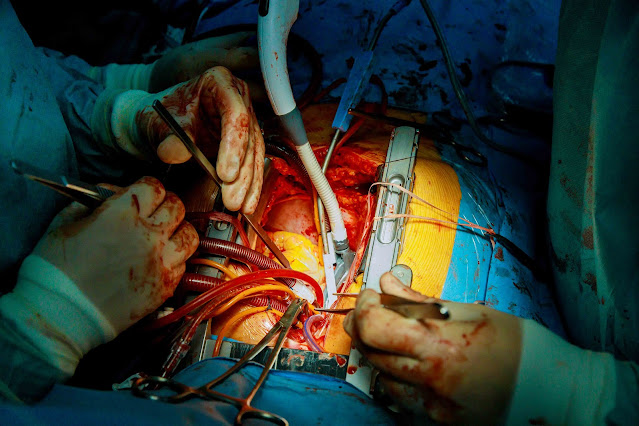Mitral valve replacement: the most commonly performed surgical procedure for treating a narrowed mitral valve
The Ram Mangal Heart Foundation is
doing the best cardiac procedures. One of them is Mitral valve repair and
mitral valve replacement. Mitral valve repair and replacement are surgical
procedures that repair or replace a leaking mitral valve in the heart. Between
the left and right cardiac chambers is the mitral valve.
Dr.
Ranjit Jagtap is the best
cardiothoracic surgeon in Pune. Dr Ranjit Jagtap Daughter,
Aditi Jagtap perform several tasks at Ram Mangal Heart Foundation such as
interacting with patients, rounding on patient rooms, recording medical
records, assisting in discharges, answering phones, refilling supplies, and
supporting nursing staff with errands.
Mitral
valve replacement surgery
Mitral valve repair and replacement
take place as an open-heart surgery or as a minimally invasive cardiac surgery
treatment.
The Mitral Valve, Aortic Valve,
Tricuspid Valve, and Pulmonic Valve are the four valves in our heart. These
valves' principal role is to inhibit backward blood flow. It also ensures
unidirectional blood flow across the heart's four chambers.
The mitral valve regulates blood flow
from the left side of the heart's upper chamber to the lower left chamber. When
the left atria fills with blood, it opens up due to increased pressure. This
allow blood to flow into the left ventricle.
Mitral regurgitation, mitral valve
stenosis, mitral valve prolapse, as well as endocarditis are all diseases
related with the mitral valve.
Any top cardiac surgeon in India would
do a comprehensive examination of you before making a final judgement on the
type of surgery required to correct your mitral valve illness. If the valve get
restore, he will decalcify the valve, restructure the valve leaflets, apply
tissue patches to leaflets with tears or holes, give annulus support, or
perform chordal transfer.
A mechanical valve or a tissue valve
take place in mitral valve replacement surgery. Man-made materials such as
ceramic, titanium, or stainless steel are of mechanical valves. These last for
a long time, but the patient must take blood thinners for the remainder of his
or her life. Tissue valves, on the other hand, are of human or animal tissues,
and you will not need to take blood thinners in this scenario. Tissue valves
have a typical lifespan of 12 to 15 years.
Your surgery will take 5 to 6 hours and
will take place under general anaesthesia. Either an open-heart surgery or a
less invasive valve replacement operation will take place.
After the diseased valve get replace
through a chest incision, you have to go to the intensive care unit (ICU) for
close monitoring and treatment. After stabilizing you will get transfer to the
ward area. Afterwards, you will be get instructions on how to care for yourself
at home, as well as a nutrition chart.
You should begin walking, exercise
regularly, and eat a heart-healthy diet. This will also help you to speed up
your recovery and regain your normal strength.
Other
techniques for mitral valve repair include:
Annuloplasty: Surgeons reinforced the ring around the valve and tighten
it. To repair a heart valve, doctors may use annuloplasty alone or in
combination with other procedures.
Valvuloplasty: This catheter treatment is performed to fix a constricted
hole in the mitral valve. It's possible to do it even if you don't have any
symptoms. A catheter with a balloon on the tip is inserted into an artery in
your arm or groyne and guided to the mitral valve by the doctor. The balloon is
inflated, expanding the aperture of the mitral valve. Also, after deflating the
balloon, they will remove catheter and balloon.
Clip for the mitral
valve: A catheter with a clip on its end is
guided to the mitral valve through an artery in the groyne in this surgery. A
clip repairs the leaking mitral valve leaflet. If you have severe mitral valve
regurgitation and are not a suitable candidate for mitral valve surgery, your
doctor may also suggest this option.
Aditi Jagtap Pune performs various tasks and responsibilities as needed to
keep the unit running efficiently.




Comments
Post a Comment